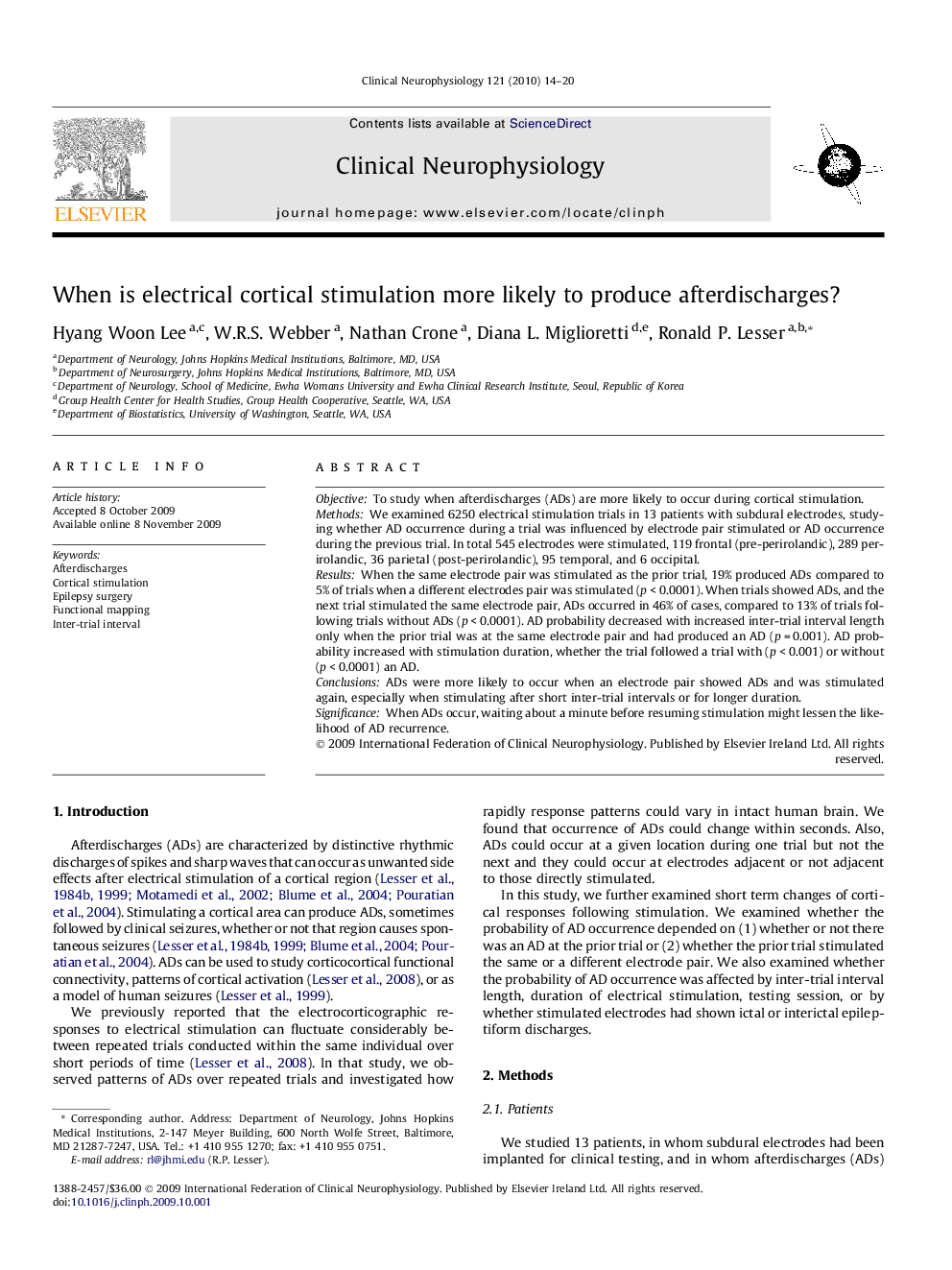| Article ID | Journal | Published Year | Pages | File Type |
|---|---|---|---|---|
| 3045345 | Clinical Neurophysiology | 2010 | 7 Pages |
ObjectiveTo study when afterdischarges (ADs) are more likely to occur during cortical stimulation.MethodsWe examined 6250 electrical stimulation trials in 13 patients with subdural electrodes, studying whether AD occurrence during a trial was influenced by electrode pair stimulated or AD occurrence during the previous trial. In total 545 electrodes were stimulated, 119 frontal (pre-perirolandic), 289 perirolandic, 36 parietal (post-perirolandic), 95 temporal, and 6 occipital.ResultsWhen the same electrode pair was stimulated as the prior trial, 19% produced ADs compared to 5% of trials when a different electrodes pair was stimulated (p < 0.0001). When trials showed ADs, and the next trial stimulated the same electrode pair, ADs occurred in 46% of cases, compared to 13% of trials following trials without ADs (p < 0.0001). AD probability decreased with increased inter-trial interval length only when the prior trial was at the same electrode pair and had produced an AD (p = 0.001). AD probability increased with stimulation duration, whether the trial followed a trial with (p < 0.001) or without (p < 0.0001) an AD.ConclusionsADs were more likely to occur when an electrode pair showed ADs and was stimulated again, especially when stimulating after short inter-trial intervals or for longer duration.SignificanceWhen ADs occur, waiting about a minute before resuming stimulation might lessen the likelihood of AD recurrence.
